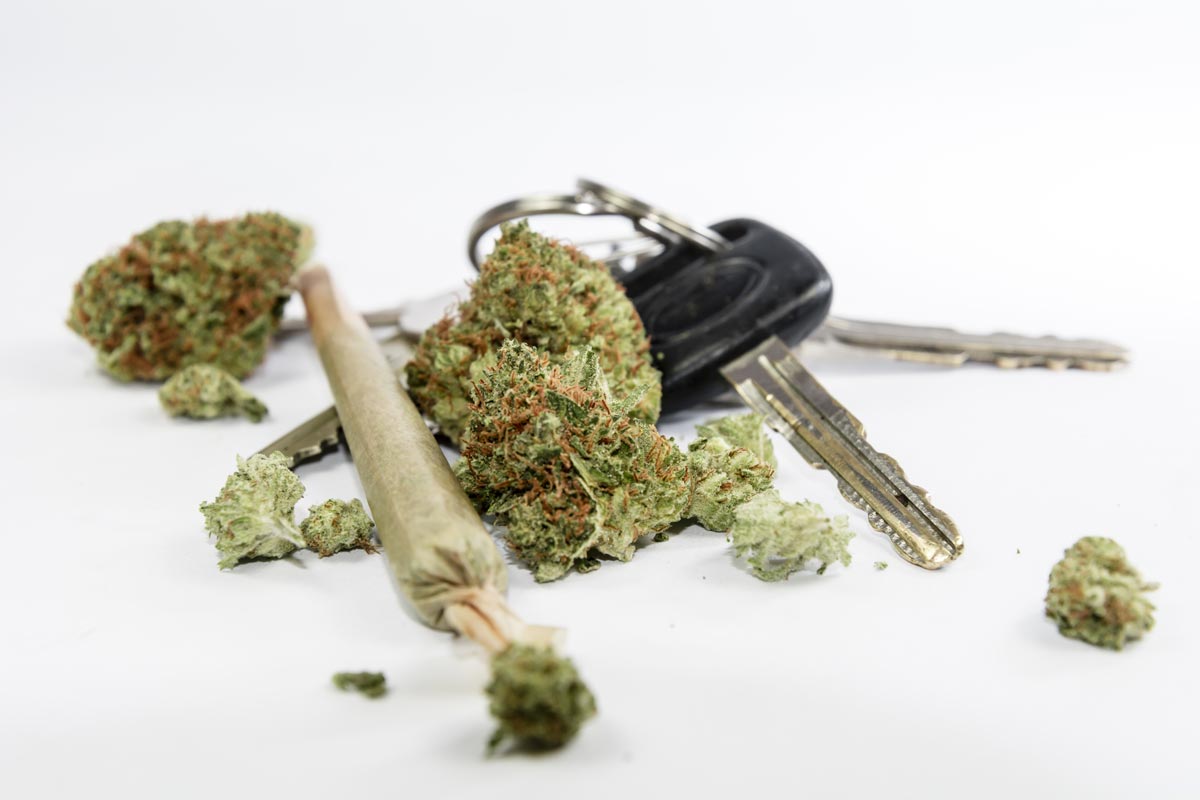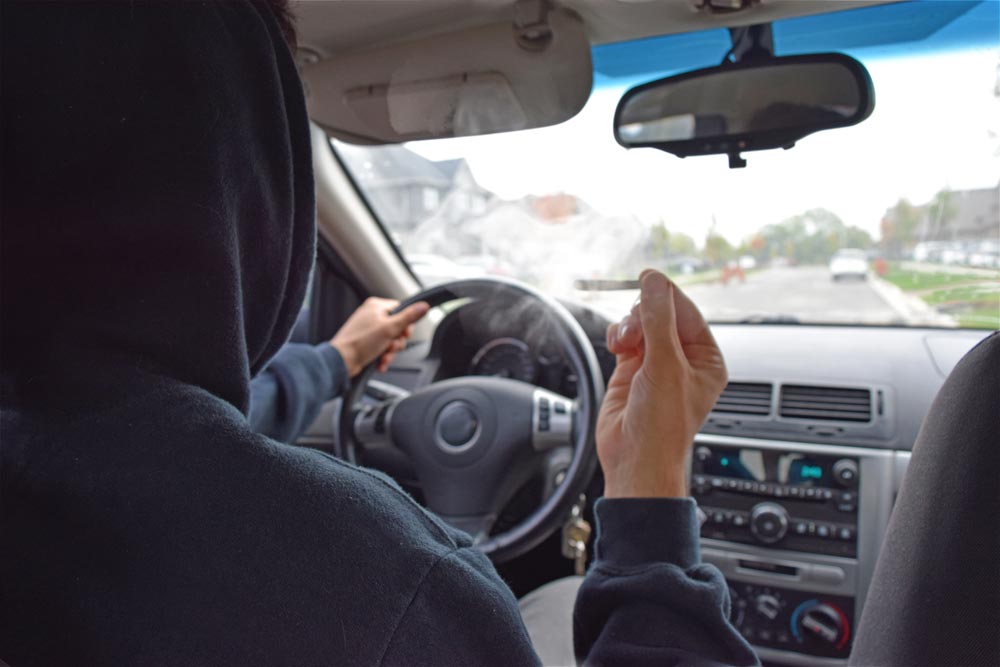 Cannabis or marijuana is one of the most popular intoxicating substances. In the United States, it’s increasingly not only accepted but also legalized. Gallup Polls show that 51% of the United States population admits to having smoked at least once. An estimated 60% of Americans want the drug legalized, and it’s legal for recreational usage in an increasingly large number of states. Most importantly, the National Survey on Drug Use and Health claims that 13% of Americans regularly (more than once per month) used cannabis, and that 9% of that 13% eventually end up with a substance use disorder.
Cannabis or marijuana is one of the most popular intoxicating substances. In the United States, it’s increasingly not only accepted but also legalized. Gallup Polls show that 51% of the United States population admits to having smoked at least once. An estimated 60% of Americans want the drug legalized, and it’s legal for recreational usage in an increasingly large number of states. Most importantly, the National Survey on Drug Use and Health claims that 13% of Americans regularly (more than once per month) used cannabis, and that 9% of that 13% eventually end up with a substance use disorder.
People increasingly see marijuana as safe, medically useful, and useful for recreational usage. To an extent it is. Cannabis products track similarly or with reduced risk to other popular intoxicants like alcohol, but it’s still an intoxicant. And, like any intoxicant, it comes with risks, negative effects, and impacts psychomotor skills. This will impact driving, and anyone who uses cannabis in any form should be aware of those effects.
Cannabis Affects Motor Controls and Response Time
A PBS American survey showed that 46% of Americans thought it was “fine” or “perfectly fine” to drive while “stoned”. Yet, cannabis impacts psychomotor performance, including hand-eye coordination, response time, and motor controls. These effects obviously become more pronounced as dosage changes but have light impact, even at a low dose. What does this mean for a driver?
- You process seeing an obstacle or a car in front of you less quickly
- You need more time to react to seeing an obstacle. The time between noticing an obstacle and hitting the breaks increases.
- You’re less able to steer and control the vehicle with precision. Most “stoned” people compensate by driving more slowly and carefully, but this can result in a greater propensity to accidents.
Psychomotor controls include how information is processed by the brain and relayed to the body and vice versa. Driving requires a significant portion of these skills because it requires tracking what’s going on around you, handling the vehicle, and (often) managing someone around you. So visual perception, audio perception, responding to perceived objects and items, maintaining focus and attention, and reaction speed all impact your ability to drive safely.
What do Studies Show?
Most studies are fairly mixed about whether marijuana use absolutely impacts driving skills. In fact, the most important study, which was carried out by the U.S. Department of Transportation’s National Highway Traffic Safety Administration found that occasional cannabis usage did not negatively impact the likelihood of an individual getting into an accident at all. This study, which was released in 2015, controlled data from 6,000 drivers over a 20-month period, and found that, when controlled for age, sex, race, and economic conditions, marijuana users were neither more nor less likely to be involved in an accident than someone who did not consume a substance.
However, this detail changes when long-term and high dosage. One extensive survey of all existing literature found that cannabis increases the likelihood of a road accident. The odds of a crash for cannabis users is 1.28 versus opiates at 1.68, and sleep medication at 2.62. (1 is the baseline). Another 2015 study found that persons involved in an accident were more than twice as likely to have cannabis in their bloodstream than a random test subject and that persons involved in an accident were more than 66% likely to have caused the crash if they tested positive for cannabis usage. Most tellingly, states that decriminalized cannabis for recreational use saw a statistically significant increase in road accidents, with Colorado seeing a 63.1% increase in marijuana-related car accidents following legalization.
So, what’s the verdict? Most medical professionals strongly advise against driving under the influence of marijuana, largely because it can increase risks. Low instances of cannabis-related accidents may simply link to the fact that cannabis users largely stay home rather than driving, despite the fact that the number of drivers testing positively for driving after using cannabis has increased by over 50% since 2007.
Be Brave. Get Help.
We know what it’s like to have a new chance at life. We want you to feel that, too.
Call us: 1 954-688-5806
It Still Counts as Driving Under the Influence
 Most states criminalize using marijuana and driving, with some states implementing similar blood-level tests to alcohol. However, with no real roadside tests, these are difficult to implement or enforce. Many states prosecute marijuana usage under their Driving Under the Influence laws, with no special regulation for cannabis usage. This means that driving while testing positive for marijuana usage in the bloodstream may negatively impact your felony record, your driver’s license, and may result in fines or jailtime. It also means that you may have to take mandatory classes and rehabilitation after multiple offenses.
Most states criminalize using marijuana and driving, with some states implementing similar blood-level tests to alcohol. However, with no real roadside tests, these are difficult to implement or enforce. Many states prosecute marijuana usage under their Driving Under the Influence laws, with no special regulation for cannabis usage. This means that driving while testing positive for marijuana usage in the bloodstream may negatively impact your felony record, your driver’s license, and may result in fines or jailtime. It also means that you may have to take mandatory classes and rehabilitation after multiple offenses.
However, laws significantly vary from state to state. You should look into and be familiar with the laws of your state because some also criminalize driving with metabolites of cannabis in the blood, which can remain for 4-7 days after usage.
It Effects Driving Over 12 Hours After You Took the Dose
Some studies show impairment to fine motor skills and reaction time as long as 12 hours after the individual takes a dose. This is critical for individuals who drive to work, operate heavy machinery, or who otherwise require fine motor controls for work. It’s also why many states, and countries such as Germany, actually ban driving for as long as 4 days following usage.
One study found that heavy users, or those with lifetime usage of +1,500 doses, showed significant impairment to motor controls, balance, and reaction time when compared to light users or non-users. These results were significantly increased for individuals who had begun smoking before the age of 16. In all cases, heavy users were worse drivers and more prone to risk-taking on the road than non-users or light users. The hypothesis that long-term cannabis use changes the brain, resulting in greater risk-taking behavior (tracking to the development of dependence and addiction).
Most research shows that marijuana negatively impacts driving and the skills that allow you to drive safely. Most people should be aware of this. Driving while intoxicated is also illegal in every state, so anyone who drives while under the influence of cannabis is putting themselves at risk in more ways than one. And, if someone consistently puts themselves or others at risk for the sake of a drug, they likely have a substance use disorder.
If you or a loved one is struggling with cannabis usage, cannot stop, use it in situations where it could harm yourself or others, or using it despite negative effects to personal, social, and work life, you likely need help. Some 9% of all cannabis users eventually develop an addiction and there is help. Getting treatment means seeking out rehabilitation, going to behavioral therapy like CBT or DBT, and receiving support in the form of counseling, group therapy, and complementary therapies. Modern drug addiction treatment is designed to tackle the underlying issues behind substance abuse to help you build coping mechanisms, correct problems, and recover to live a happy and healthy life without relying on drug use.

 Matthew Beck B.A, M.A, LMFT
Matthew Beck B.A, M.A, LMFT 



My colleague shared your article with me and I found it very useful after reading it. Great article, it helped me a lot. I also hope to make a beautiful website like your blog, hope you can give me some advice, my website: gate io location